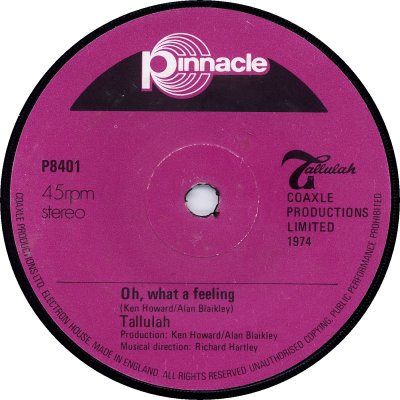
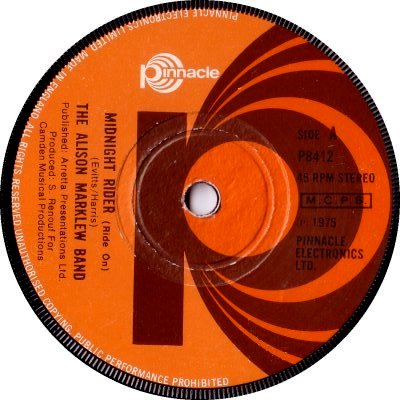

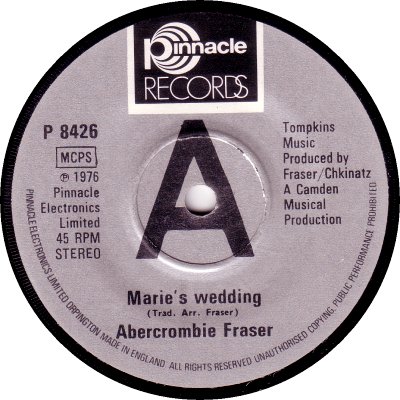
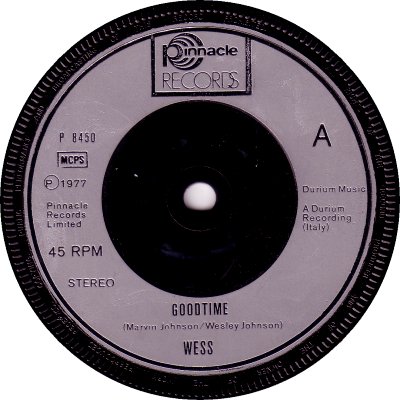

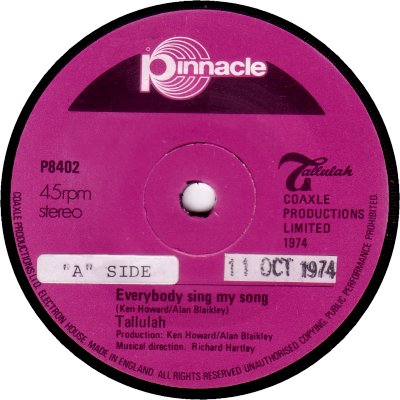
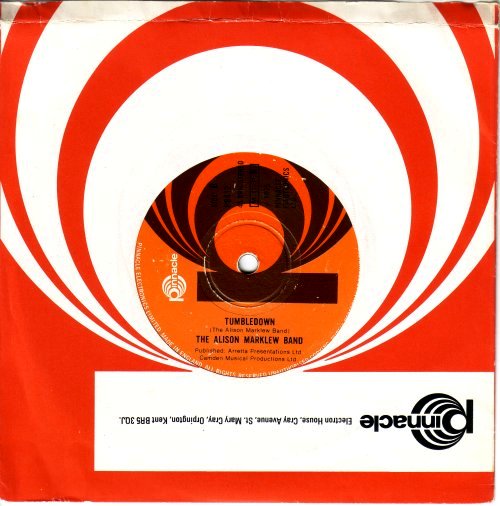
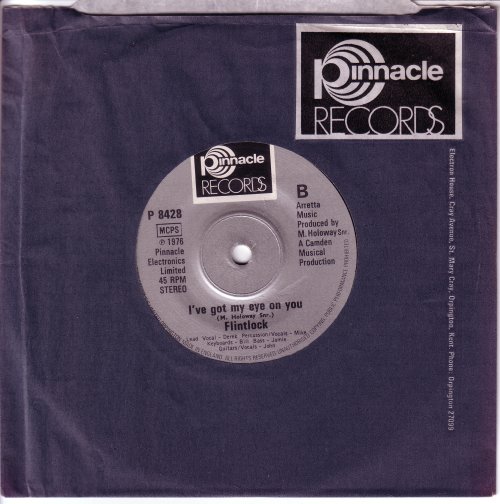
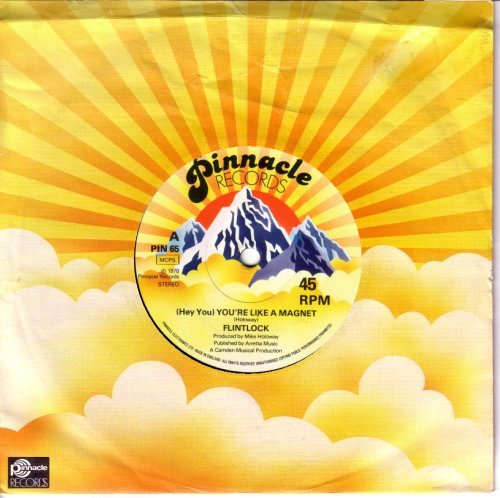
The label of an electronics firm of that name, from Orpington, Kent. Pinnacle started out in 1952 as an electrical / audio company. It took its first steps into the world of recordings in late 1971 or early 1972, with the launch of a series of spoken word cassettes, the 'Pinnacle Storyteller' series. The narrators included some well-known names, such as Jon Pertwee, June Whitfield and Bernard Cribbins. 'Billboard' of the 18th of December 1971 reported on the forthcoming series, saying that the tapes would feature 'Children's literary classics and fairy tales'; they were being produced by a firm called Group Communications and were being marketed and distributed by Pinnacle Electronics themselves. In 1972 Pinnacle was acquired by conglomerate Grampian Holdings, becoming part of its entertainment and leisure arm ('Billboard', 15th May 1978). The following year it dipped its toe into the LP market, releasing the first of a couple of albums by MOR vocal duo David Macbeth & Mirelle, 'Two For The Road' (PLP-0001; 1973). Several more albums appeared in 1974, including a couple aimed at children and featuring the adventures of a cat named Tallulah. The Tallulah records included some songs, written by Ken Howard and Alan Blaikley, and four of these were lifted to provide the first two Pinnacle singles, 'Oh, What A Feeling' b/w 'Everybody's Gone To Bed' (P-8401; 1974), and 'Everybody Sing My Song' b/w 'Moving To The Music' (P-8402; 10/74). Both were credited to Tallulah.
1975 saw Pinnacle moving up a gear. 'Music Week' of the 12th of April reported that after being in the children's tape market since 1971 the company was planning to expand into Pop, with managing director Ted Scully supervising the new record division. Pressing was to be done by Orlake, and the material on the records would be original. 'MW' of the 21st of June observed that Pinnacle had released its first three singles, but it may well have been referring to the first three singles under the new order - the actual first three singles had come out the previous year. The article added that the aim was for 12 to 15 singles and 5 or 6 LP to be released per year, and that the company had its own distribution service. 'MW' of the 23rd of August was able to report that Flintlock's 'Learn To Cry' b/w 'I'm Going Home' (P-8409; 8/75) and 'Jody' b/w 'And How' by Terese Stevens (P-8410; 8/75) were both receiving 'heavy radio play', which had encouraged Pinnacle to set up a telephone sales operation. Flintlock developed into a popular 'teenage heart-throb' band and got into the Charts with 'Dawn' b/w 'Thunderman' (P-8419; 4/76) in 1976, but success elsewhere proved elusive.
A comprehensive revamp followed in 1978. Paul Lynton, previously general manager of Hansa U.K., was brought in as managing director of the record division; 'Billboard' of the 15th of July, commenting on the development, said that he would be heading up a new 'joint label', Firebird, the products of which would be released on the Pinnacle label (see 'Pinnacle Firebird'). The label design was also revamped, the old silver one (3) being replaced by a multicoloured (6). The appointment of Lynton proved to be a good move: he pointed Pinnacle in the direction of Disco music, as witness a comment by James Hamilton in 'Record Mirror' of the 14th of October 1978 to the effect that the company needed new Disco-type acts to record and was looking for audition tapes. The same article was unenthusiastic about one such Pinnacle effort, a Disco version of the Mamas & Papas' 'California Dreamin'' b/w 'Space Lady Love' by Colorado (PIN-67; 10/78), bit it managed to get into the Top 50 nonetheless. A similarly Disco-fied rendering of the 'Dr. Who' theme, b/w 'Time Traveller' by Mankind (PIN-71; 11/78), licensed from Motor Records (q.v.), improved on that be entering the Top 30. Both were Firebird records, and had the Firebird logo on their labels. The Nick Straker Band managed to touch the Top 20 with 'A Walk In The Park' b/w 'Something In The Music' (PIN-1; 4/79), but only after it was licensed to CBS and reissued (S CBS-8525; 6/80). In addition the company opened a London office, at 9, Dean Street, W1 ('MW', 19th May 1979).
In 1979 Pinnacle broadened the scope of its interests by offering a distribution service to other companies. Having got two singles of its own into the Charts it had proved that it had the capability to meet a demand, and 'Billboard' of the 24th of March 1979 revealed that it wanted to attract other independent labels and distribute them. Clients duly arrived: 'MW' of the 3rd of November was able to reveal that Pinnacle was now handling records on the G.G., Hit & Run, Fresh, Object Music, Rola, Avada, Ignition and Big V labels (q.v. all). That side of the business blossomed, and became the company's main interest. Some of the distributed labels enjoyed Chart success in the early '80s: Keith Marshall's, 'Only Crying' b/w 'Don't Play With My Emotions' on Arrival (PIK-2; 3/81) reached No.12 in 1981, and Hollywood Records hit the No. 1 spot with Renee & Renato's 'Save your Love' b/w 'If Love Is Not The Reason' (HWD-003; 10/82) in 1982. The company gained its independence from Grampian Holdings in 1983 when Ted Scully headed a management buyout - his family had been associated with Pinnacle from the start ('BB', 24/11/84).
All was not well, however, and 'Billboard' of the 24th of November 1984 broke the news that the receiver had been called in. The article blamed bad debts, poor returns from the record division and a dramatic drop in the electronics side of the business. The receiver allowed the company to function as a going concern while potential buyers were sought, and 'BB' of the 26th of January 1985 was able to state that export company Windsong had taken over Pinnacle with the exception of its electronics division, but that it had not taken over responsibility for its debts. Most of the independent record companies which had been handled by Pinnacle stayed with it, and it went on to become one of Britain's busiest and biggest independent distributors, a position which it still holds today.
'70s Pinnacle singles came in four different designs. The first three, from 1974, came with fairly restrained purple labels (1, 8); at the time of the effective relaunch, in 1975, these were replace by more exuberant orange-and-brown ones (2), which looked a little lopsided and didn't last for too long - they were used up to January 1976 and P-8414. The third, silver, design (3) came into use with P-8415 and lasted from February 1976 up to September 1978, and P-8449, at which point an injection moulded version, manufactured by Phonodisc, began to be used (5) - 8449 can be found in both forms. The large 'A' on a couple of singles (4) seems to be merely an indicator of the 'A' side - there don't seem to have been any dedicated promo / demo labels. When the company underwent its revamp in 1978 the injection moulded labels eventually gave way to an eye-catching multi-coloured design (6), which saw out the decade. Some singles from the 'multi-coloured' era can be found on a plain silver-and-black version of the label; these were pressed in Chicago in order to meet the demand caused by the record entering the Chart. Many 'multicoloured' singles have a 'Firebird' logo above the name; see the 'Pinnacle Firebird' page for these. The red-and-white sleeve (8) is correctly scanned, despite the fact that the writing on it is upside-down: in line with the topsy-turvyness of the label design the opening is at the top. Catalogue numbers started off in a P-8400 series, which reached at least 8456; they changed to PIN-60 in the Spring of 1978, when the multi-coloured labels were introduced, but the matrix numbers continued to have the '84' if front of the number, as in 'P-8465'. Another change followed in April 1979, when the PIN-60s were superseded by PIN-0s. Several numbers, including 8404, 8405 and the block from 8457 to 8563 seem not to have been used. The 1980s saw further changes of label design and of numbering, but they are beyond the scope of this site. Pressing was done by a number of different firms, including Orlake, Pye, Phonodisc, Lyntone, occasionally RCA, and possibly Linguaphone in the beginning.
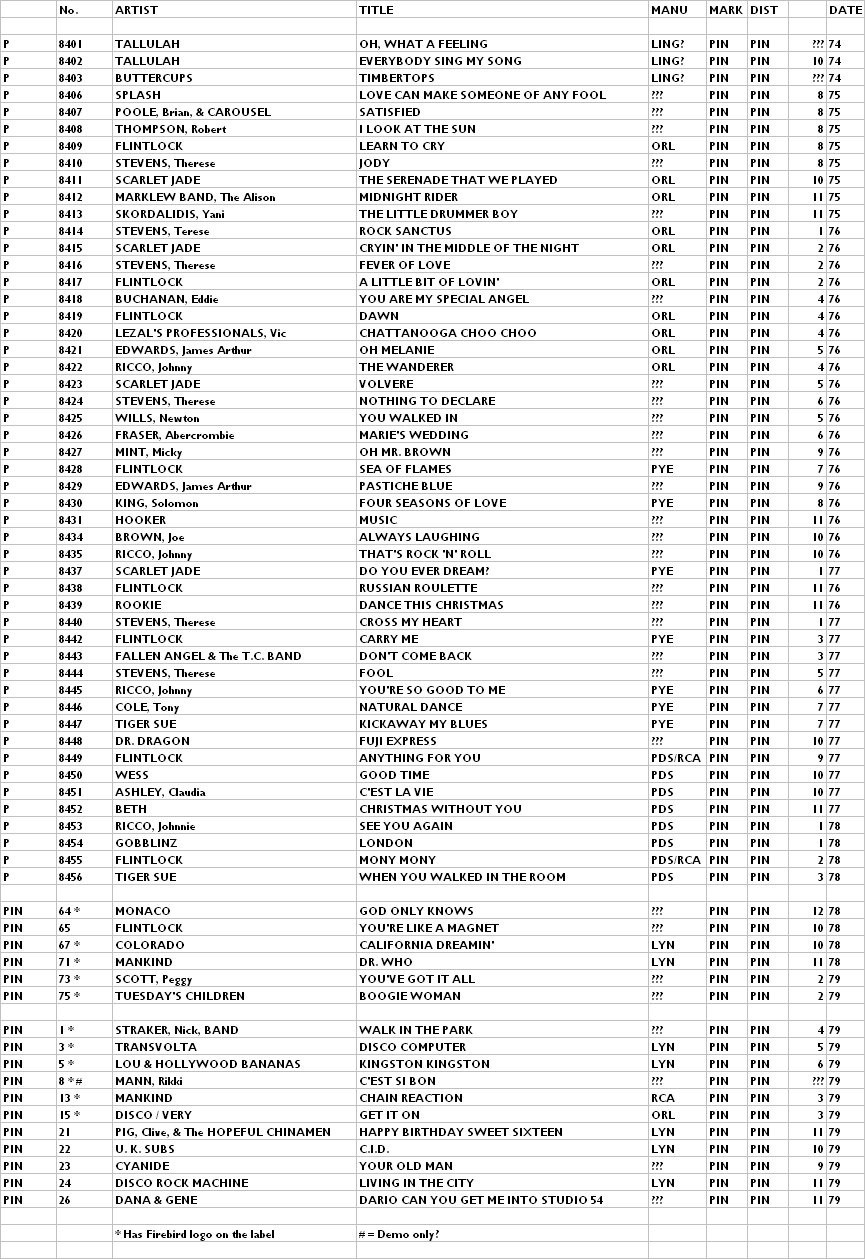

Copyright 2006 Robert Lyons.

